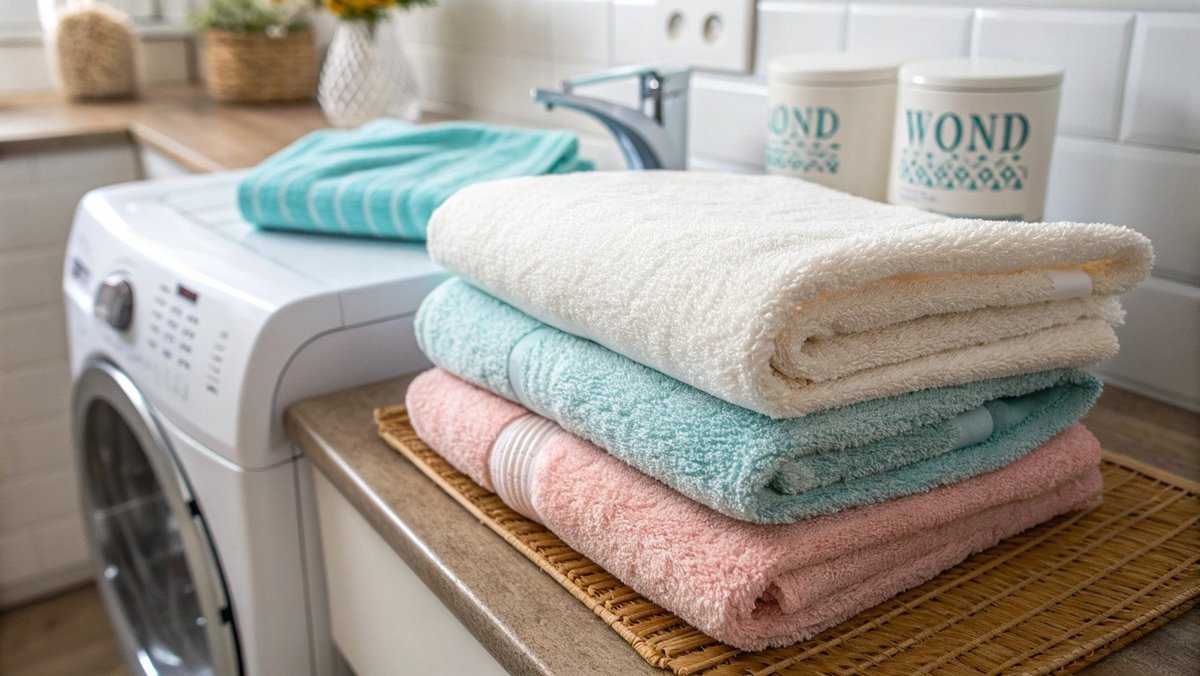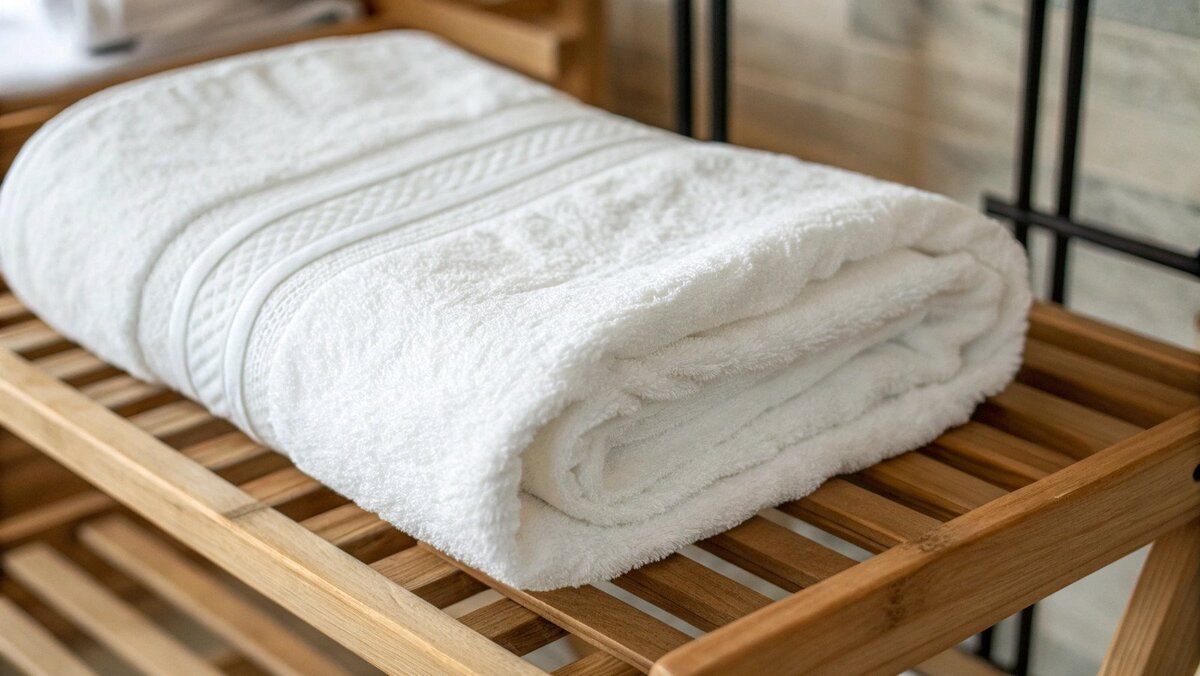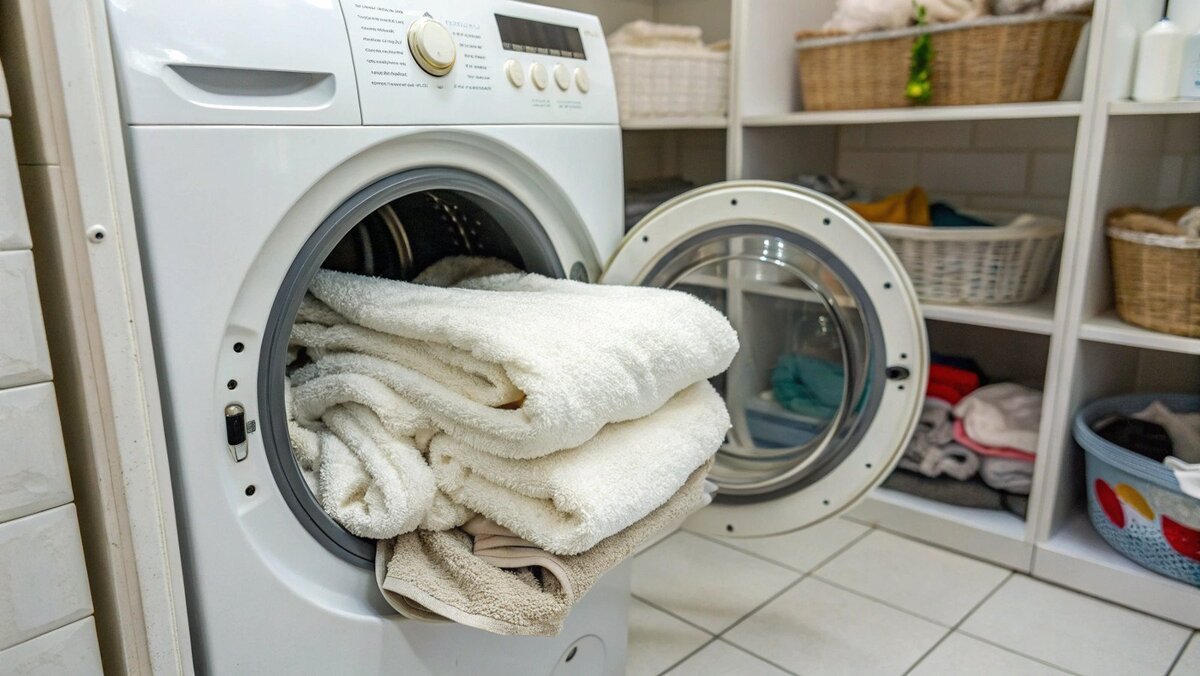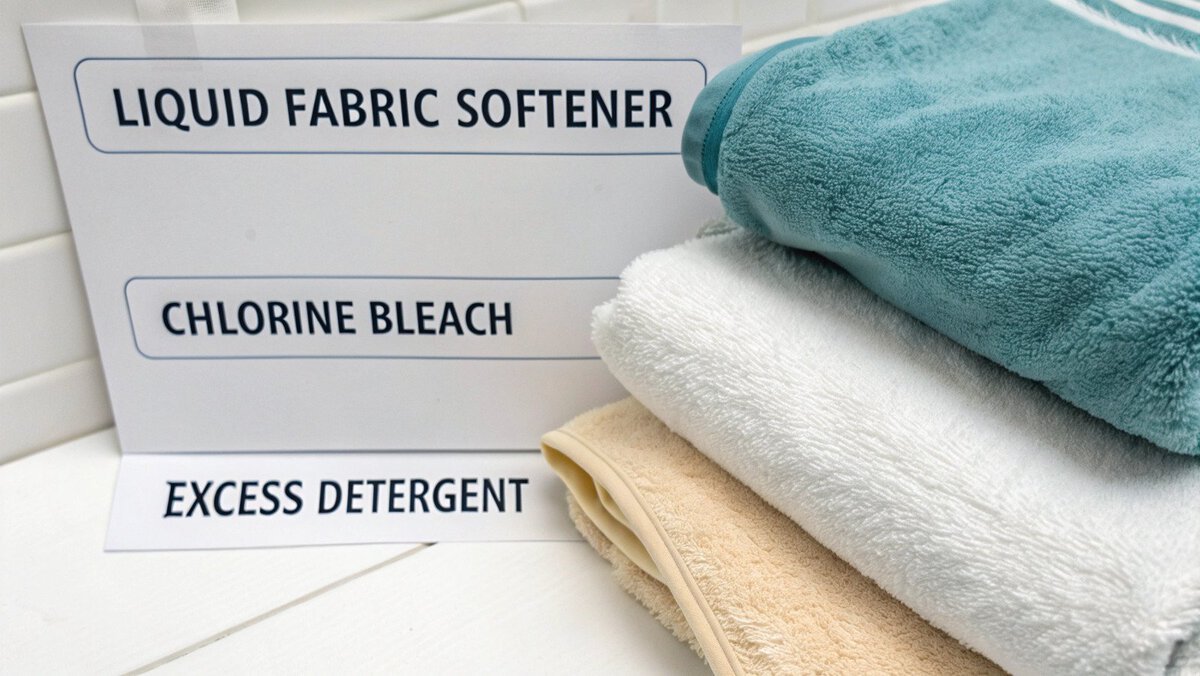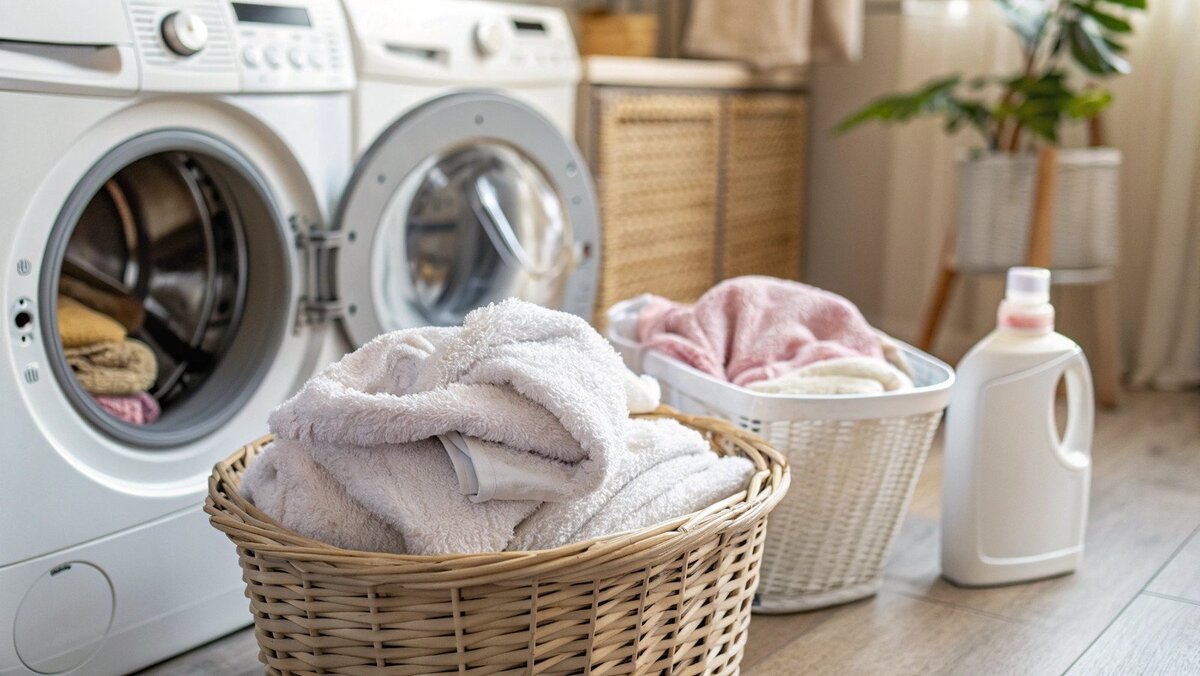Are your fluffy towels turning stiff and scratchy? You bought them for comfort, but now they feel like sandpaper. There is a simple fix in how you wash them.
To properly wash bath towels, use warm water and the recommended amount of detergent in a separate load. Avoid fabric softeners, as they reduce absorbency. Dry towels on a medium heat setting right after the wash cycle ends to keep them soft, fluffy, and fresh.
As the Marketing Director for TowelTrend, I’ve seen thousands of a client’s towels, from brand new to well-loved. I’ve learned that the biggest factor in a towel’s lifespan isn’t just the quality of the cotton—it’s how you care for it. Simple mistakes in the laundry room can ruin even the most luxurious towels we produce. I want to share the industry secrets to keeping them perfect, protecting both your comfort and your investment. Let’s look at the details that make all the difference.
How often should a bathing towel be washed?
Wondering if you’re washing towels too much or not enough? Over-washing wears them out, but under-washing is unhygienic. Let’s find the correct balance for perfect towel care.
You should wash your bath towel after every three to four uses. This simple routine prevents bacteria and mildew from growing in the damp cotton fibers. If you live in a humid climate or the towel stays damp, wash it more often, about every two uses.
In my years in the textile industry, I’ve seen firsthand how washing frequency impacts a towel’s longevity. While we weave our towels for durability, even the best materials need proper care. For our clients in the hospitality and fitness industries, hygiene standards are non-negotiable. They can’t risk a guest or member using a towel that isn’t perfectly clean. However, for home use, the "three to four uses" rule is a solid guideline. Remember to hang your towel unfolded after each use so it can air dry completely. A dry towel is less hospitable to germs.
Factors That Affect Washing Frequency
Several factors can change this standard rule. Your environment and how you use the towel matter a lot. A towel used to dry off after a quick shower is very different from one used after a sweaty workout. Understanding these differences is key to proper towel hygiene. Here is a simple guide.
| Towel Use & Condition | Recommended Wash Frequency | Por que é importante |
|---|---|---|
| Normal Daily Use | Every 3-4 uses | Balances hygiene with preserving the tecido‘s life. |
| Humid Environment | Every 1-2 uses | Prevents mildew and bacteria, which thrive in moisture. |
| After Being Sick | After every single use | Stops the spread of germs to yourself and others. |
| Gym or Workout Towel | After every single use | Removes heavy sweat, oils, and bacteria immediately. |
What happens if you don’t wash your bath towels?
That towel you’ve used all week might seem fine. But what you can’t see or smell right away can cause skin problems and turn your bathroom into a sour-smelling space.
If you don’t wash your bath towels, they become a perfect breeding ground for bacteria, mold, and fungi. This can cause skin infections, trigger acne, and create a persistent musty odor. The towel’s fibers will also become stiff with grime and body oils.
An unwashed towel doesn’t just feel gross; it’s a health risk. Every time you dry off, you’re rubbing dead skin cells, oils, and microbes onto the towel. Add in the warm, damp environment of a bathroom, and you’ve created a petri dish. I’ve had clients ask me about strange stains or a sour smell that won’t go away. Often, the cause isn’t a manufacturing defect but mildew that has started to grow deep within the cotton fibers.
The Unseen Dangers
When a toalha stays damp, microbes multiply rapidly. These aren’t just harmless germs. They can include bacteria like Staphylococcus aureus, which can cause skin infections, or fungi that lead to athlete’s foot and jock itch. You are essentially rubbing this growing colony back onto your clean skin every time you reuse the dirty towel. This can be especially problematic for people with sensitive skin, eczema, or acne.
Impacto na qualidade da toalha
Beyond the health concerns, not washing your towels ruins them. The buildup of body oils, soaps, and minerals from hard water makes the fibers stiff and less absorbent. Mildew can also physically break down cotton fibers, leading to weak spots and even holes over time. That foul, sour smell is a sign of bacterial waste products. Once it sets in, it’s incredibly difficult to remove, sometimes requiring multiple deep cleaning cycles to salvage the towel. Regular washing prevents all of this, protecting the towel’s quality.
What not to use when washing towels?
You might think you’re helping your towels by adding certain laundry products. But many common laundry aids actually damage towel fibers, making them stiff, weak, and less absorbent over time.
Never use liquid fabric softener when washing towels. It coats the fibers with a waxy residue that repels water and destroys absorbency. You should also be careful with chlorine bleach, which weakens cotton, and avoid using too much detergent, which leaves a stiff buildup.
At TowelTrend, our quality control process involves dozens of wash cycles to test a towel’s durability and absorbency. The fastest way to make a premium towel fail our tests is by washing it with fabric softener. It instantly ruins the core function of a towel. This is the first piece of advice I give every new client. Protecting the towel’s absorbency is essential for their brand’s reputation, whether it’s in a hotel, spa, or retail store. Using the wrong products is a costly and easily avoidable mistake.
Problem Products and Better Alternatives
Let’s break down why these products cause problems and what you should use instead.
| Problem Area | Product to Avoid | Why It’s Harmful | The Better Alternative |
|---|---|---|---|
| Absorção | Liquid Fabric Softener | Coats fibers with a water-repellent film. | Add 1/2 cup of white vinegar to the rinse cycle to soften and remove residue. |
| Fiber Strength | Chlorine Bleach | Harsh chemical that breaks down cotton fibers, causing thinning and holes. | Use an oxygen-based bleach (like OxiClean) for stains and brightening. |
| Stiffness | Detergente em excesso | Leaves behind a soapy residue that makes towels feel stiff and scratchy. | Use the amount recommended on the bottle, or slightly less, especially with soft water. |
Using these alternatives not only keeps your towels functioning as they should but also extends their lifespan.
What is the best way to wash towels to keep them soft?
Are you missing that plush, fluffy feel of a brand-new towel? Your washing machine can either restore that softness or make your towels stiff. All you need is the right method.
To keep towels soft, wash them in their own load using warm water. Use slightly less detergent than directed and add a half-cup of white vinegar during the rinse cycle. Then, tumble dry them on a medium heat setting, making sure not to over-dry them.
The secret to softness isn’t about adding chemicals; it’s about removing residue. High-quality towels, like the ones we manufacture with long-staple cotton, are naturally soft. The stiffness you feel over time is just buildup from detergent and minerals in your water. The correct washing technique simply restores the towel to its natural state. When I visit our production facility, after a towel comes off the loom and goes through its final wash, we shake it out vigorously. This simple act helps the fibers stand up, and it’s a great final step you can do at home before drying.
Your Step-by-Step Washing Guide
Follow these steps for the softest towels.
- Separate: Always wash towels in a load by themselves to prevent lint transfer and allow for proper rinsing.
- Não sobrecarregue: Give the towels plenty of room to tumble in both the washer and dryer. This ensures they get thoroughly cleaned and evenly dried.
- Use Warm Water: Warm water is effective at dissolving detergent and cleaning away germs and oils.
- Use Less Detergent: Too much soap is the primary cause of stiff towels. Use a little less than the bottle suggests.
The Magic of Vinegar
Adding about a half-cup of white vinegar to your rinse cycle is the best trick in the book. It’s a natural fabric softener. Vinegar works by breaking down the detergent and mineral residue clinging to the fibers. This releases the fibers, allowing them to become fluffy and absorbent again. Don’t worry about the smell; it washes out completely in the dryer.
Técnicas de secagem inteligentes
How you dry your towels is just as important as how you wash them.
- Shake Them Out: Before putting towels in the dryer, give each one a good shake. This helps to fluff up the fibers.
- Use Medium Heat: High heat can damage and "cook" the cotton fibers, making them brittle. A medium setting is perfect.
- Don’t Over-Dry: Over-drying also leads to brittle, scratchy towels. Remove them when they are about 95% dry and let them air dry the rest of the way.
Conclusão
Proper towel care is simple. Wash your towels frequently, use the right products like vinegar instead of fabric softener, and dry them correctly. This keeps them soft and absorbent for years.

